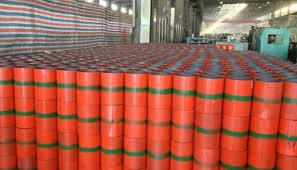- Afrikaans
- Albanian
- Amharic
- Arabic
- Armenian
- Azerbaijani
- Basque
- Belarusian
- Bengali
- Bosnian
- Bulgarian
- Catalan
- Cebuano
- Corsican
- Croatian
- Czech
- Danish
- Dutch
- English
- Esperanto
- Estonian
- Finnish
- French
- Frisian
- Galician
- Georgian
- German
- Greek
- Gujarati
- Haitian Creole
- hausa
- hawaiian
- Hebrew
- Hindi
- Miao
- Hungarian
- Icelandic
- igbo
- Indonesian
- irish
- Italian
- Japanese
- Javanese
- Kannada
- kazakh
- Khmer
- Rwandese
- Korean
- Kurdish
- Kyrgyz
- Lao
- Latin
- Latvian
- Lithuanian
- Luxembourgish
- Macedonian
- Malgashi
- Malay
- Malayalam
- Maltese
- Maori
- Marathi
- Mongolian
- Myanmar
- Nepali
- Norwegian
- Norwegian
- Occitan
- Pashto
- Persian
- Polish
- Portuguese
- Punjabi
- Romanian
- Russian
- Samoan
- Scottish Gaelic
- Serbian
- Sesotho
- Shona
- Sindhi
- Sinhala
- Slovak
- Slovenian
- Somali
- Spanish
- Sundanese
- Swahili
- Swedish
- Tagalog
- Tajik
- Tamil
- Tatar
- Telugu
- Thai
- Turkish
- Turkmen
- Ukrainian
- Urdu
- Uighur
- Uzbek
- Vietnamese
- Welsh
- Bantu
- Yiddish
- Yoruba
- Zulu
Exploring API Casing Sizes for Optimal Performance in Engineering and Industrial Applications
Understanding API Casing Sizes A Comprehensive Overview
In the oil and gas industry, the American Petroleum Institute (API) standardizes various components, one of which includes casing sizes. API casing sizes are critical for ensuring the integrity, safety, and performance of wells. This article provides an overview of API casing sizes, their importance, and the various specifications that industry professionals should be familiar with.
What is Casing?
Casing is a series of steel pipes that are inserted into a drilled well to stabilize its walls. It serves several essential functions, including preventing the collapse of the well, isolating the various groundwater layers, and providing protection from contamination. The casing also serves as a conduit for the extraction of oil and gas and is vital for maintaining pressure within the wellbore.
Understanding API Casing Sizes
API casing sizes are defined by their nominal diameter, wall thickness, and sectional weight. The diameter refers to the outer width of the casing, while the wall thickness and weight per foot are crucial for determining the casing's ability to withstand the stresses and pressures encountered during drilling and production operations.
API casing sizes are standardized to ensure that producers can easily select the appropriate size for their specific drilling conditions. The most common sizes range from 4.5 inches to 20 inches in diameter, but specialized applications can require even larger or smaller casings. The API specifications also denote the grade of the casing, which is paramount for understanding its strength, ductility, and suitability for different environments.
Common API Casing Sizes
api casing sizes

1. 4.5-inch Casing Widely used for production wells, this size is suitable for shallow to moderate-depth wells. 2. 7-inch Casing Often utilized in deeper drilling operations, providing a robust solution for extracting hydrocarbon resources.
4. 13.375-inch Casing Typically employed for intermediate and production casing, offering excellent stability for deeper wells.
5. 20-inch Casing Commonly used in surface casing applications to prevent the well from collapsing and protect the freshwater zone from contamination.
The Importance of Selecting the Right API Casing Size
Choosing the appropriate casing size is vital for multiple reasons. First, it ensures structural integrity and the well's overall safety. An incorrect size can lead to well failure, leading to costly repairs and environmental hazards. Second, proper casing selection can significantly enhance the efficiency of oil and gas extraction, optimizing production rates while minimizing operational risks.
Conclusion
In conclusion, understanding API casing sizes is fundamental for professionals in the oil and gas industry. Knowledge of different sizes and specifications allows for better planning and execution of drilling operations, ultimately leading to safer and more productive outcomes. As technology and methods evolve, staying informed about casing standards and specifications will be essential for ensuring operational excellence in a competitive landscape. Whether opting for common sizes like 4.5 inches or 20 inches or delving into special applications, the right choice can make all the difference in the success of drilling endeavors.
-
Tubing Pup Joints: Essential Components for Oil and Gas OperationsNewsJul.10,2025
-
Pup Joints: Essential Components for Reliable Drilling OperationsNewsJul.10,2025
-
Pipe Couplings: Connecting Your World EfficientlyNewsJul.10,2025
-
Mastering Oilfield Operations with Quality Tubing and CasingNewsJul.10,2025
-
High-Quality Casing Couplings for Every NeedNewsJul.10,2025
-
Boost Your Drilling Efficiency with Premium Crossover Tools & Seating NipplesNewsJul.10,2025







